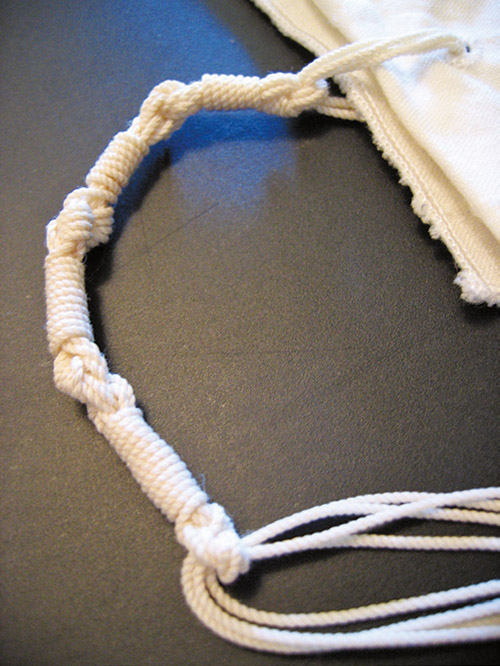Dear Readers,
Please enjoy another beautiful article written by Joel Mizrahi of Congregation Shaarei Orah, the Sephardic Congregation of Teaneck:
Regarding tzitzit, the halachot and minhagim are extensive, and there is plenty to write about, although I’ll focus on some of the differences between the prevalent minhagim regarding how tzitzit are tied and worn nowadays.
There are many different opinions for tying tzitzit, from Rishonim (Rambam, Rashi, Tosafot, Raavad, Sefer HaHinuch and more), as well as Aharonim (AriZal, Vilna Gaon, Ben Ish Hai, Breslov, and more).
Some of those are specific to methods for tying techelet, although tying techelet and the discussion on techelet validity nowadays is outside the scope of this article.
The most common tzitzit-tying methods are Ashkenazi, Sephardic, Chabad and Yemenite.
The tzitzit strings are wrapped and folded over through the hole in the garment (beged) and tied with a knot on top, and then a series of winding groups (hulyot), with knots in between each hulya, down the set of strings.
The different minhagim (see photos) are tied with some variations, including a different amount of windings in each hulya, the types of knots as well, and some that have additional spirals going down each hulya.
Ashkenazi tzitzit are tied with five knots, and four hulyot in between those knots. Each hulya has a different number of winds—the first being seven, then eight, then 11 and then 13.
This set of 7-8-11-13 totals 39, which is the gematria of Hashem’s name (26) and אחד) 13) together.
Sephardic tzitzit are tied similarly, with five knots and four hulyot, although they have an extra loop around each wind, which results in a ridged winding on each hulya, and ends up looking like each hulya has a spiral staircase on it.
The Sephardic tallit gadol is generally tied using the 7-8-11-13 sequence like the Ashkenazim, although it also has the extra spiral ridges.
On the other hand, the Sephardic tallit katan is tied using a 10-5-6-5 sequence, which is the order of the letters of Hashem’s name, as well as the gematria (26), also with the extra spiral ridges.
The Chabad tzitzit are tied somewhat similarly to Sephardic tzitzit, although there are a few differences. Firstly, the beged usually has two holes, where the strings are wrapped through both to keep the tzitzit in place so they don’t move to the other side of the corner.
The tzitzit are still tied with five knots and four hulyot in the 7-8-11-13 sequence, although each hulya has the windings grouped into smaller units.
The first one (7) has groups of 3, 3, and 1. The second one (8) has groups of 2, 3, and 3. The third one (11) has groups of 3, 3, 3, and 2. The fourth one (13) has groups of 1, 3, 3, 3, and 3.
These separations create a similar look to the staircase on the Sephardic tzitzit, although while the Sephardic one looks spiral, the Chabad looks straight.
The Yemenite tzitzit, following the Rambam (most Yemenite minhagim follow the Rambam in general), is the most different from the others. They are tied with just one knot at the top (this one knot is what is required by Torah Law) and then a series of seven (or 13) separated hulyot (3 winds in each hulya) without any other knots.
There are some variations with regard to the customs of tying and wearing tzitzit, but we are all one unified nation (am ehad) wearing tzitzit together!
Rabbi Haim Jachter is the spiritual leader of Congregation Shaarei Orah, the Sephardic Congregation of Teaneck. He also serves as a rebbe at Torah Academy of Bergen County and a dayan on the Beth Din of Elizabeth.









